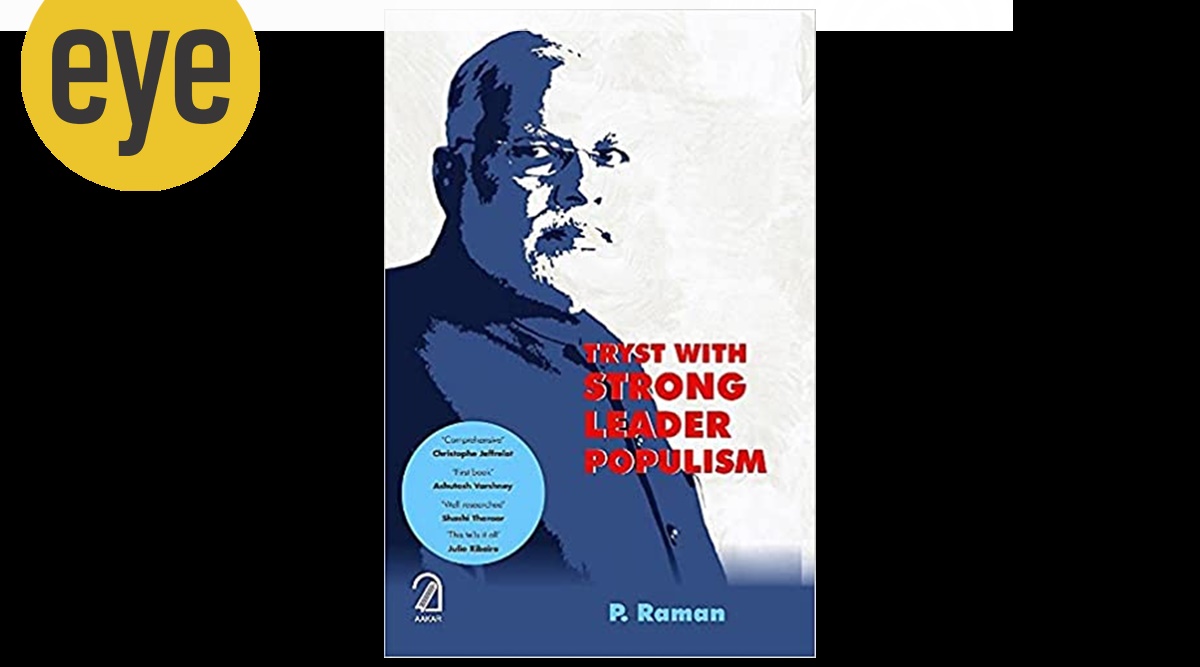 Tryst with Strong Leader Populism P RAMAN Aakar Books 285 pages Rs 695 (Source: Amazon India)
Tryst with Strong Leader Populism P RAMAN Aakar Books 285 pages Rs 695 (Source: Amazon India) Contrary to a number of books that have come out after Narendra Modi’s emergence as one of the most popular leaders in recent history, Tryst with Strong Leader Populism, by former journalist P Raman, stands out because of the painstaking and meticulous research that has gone into it and of the analytical study it has made of the Modi regime. At the risk of being downplayed as a cynic, Raman looks at each major decision of the Modi government since it took office in 2014 and combines media reports — Raman appears to have loyally tracked every report on the functioning of the Prime Minister and his office — with critical analysis.
The emergence of electoral authoritarianism, the degradation of institutions and centralisation of power in one person are presented through numerous newspaper reports. In order to prove his analysis credible, the author has provided 500-plus endnotes and citations. That also makes reading the book a painstaking task — sometimes, it reads like a logbook of detailed information.
Raman speaks of how Project Modi was unveiled with the wholehearted support of the RSS, the meticulous strategies of Amit Shah, and by the BJP as an organisation. Even after the initial enthusiasm and excitement fizzled, Raman says, one strategy — Hindu consolidation — holds Modi at the top.
The book begins with Raman exploring the making of Modi the messiah. It tells you how Modi managed to get the RSS to back his every move, even forcing its affiliated groups to refrain from picking on the government. Not many know the role RSS chief Mohan Bhagwat played in the making of Modi. “Bhagwat began acting as Modi’s godfather. For a year, he personally micromanaged every move within the BJP. He carefully plotted the transfer of total power to Modi and ruthlessly suppressed voices of dissent,” the book says. The sarsanghchalak, according to the author, took great pride in his role. “Bhagwat in the transitional days said he took Modi as his war horse. He boasted that no one could touch his ashwamedh.” He also went on to meet corporate leaders, retired bureaucrats and Hindutva intellectuals to convince them about Modi.
Raman explores how Project Modi was unveiled using multiple advertisement agencies and the use of big and small media houses and what it cost. He says Modi’s obsession with digital technology could go to such an extent that he chose department secretaries based on the biometric attendance records of senior bureaucrats and on the basis of the number of hours they spent at work on weekends and holidays. He lists a series of flagship schemes and decisions — including the abolition of all Group of Ministers and cutting down the size of the cabinet — that were initially projected as pathbreaking ideas of the PM and some of which had to be retracted later as they backfired.
Not just that, he says, many a time, “undue push on the implementing agencies to avert slippages invariably leads to fudged figures.” The author lists how institutions were targeted to extend the government’s hold over autonomous statutory bodies such as the Central Vigilance Commission, Reserve Bank of India and Comptroller and Auditor General and how the government systemically weakened them by pushing out independent-minded governors and appointing bureaucrats who know the government’s mind. Raman terms the NDA government as the “most persisting meddler in the judiciary” and adds that after 2014, all normal channels of communication between the government and the Opposition were snapped.
But, according to him, nothing is as grave as the poor economic decisions taken by the Prime Minister, be it demonetisation or the implementation of GST. However, despite the “disastrous economic gamble”, the middle class did not complain because of their trust in Modi’s “sincerity of purpose.” In the battle of perception, the NDA flourishes despite the scams by fugitives like Nirav Modi and Mehul Choksi and the charges over the Rafale deal.
Although Modi has “convincingly proved the stunning success of his vishwas plus Hindutva cocktail”, there have been chinks in the armour. Western media’s critical approach to the regime, the widespread protests against the Citizenship (Amendment) Act and National Register of Citizens, the growing rural discontent, the failure in managing the situation during the second surge of the COVID-19 pandemic are shown as setbacks to the government.
- The Indian Express website has been rated GREEN for its credibility and trustworthiness by Newsguard, a global service that rates news sources for their journalistic standards.

